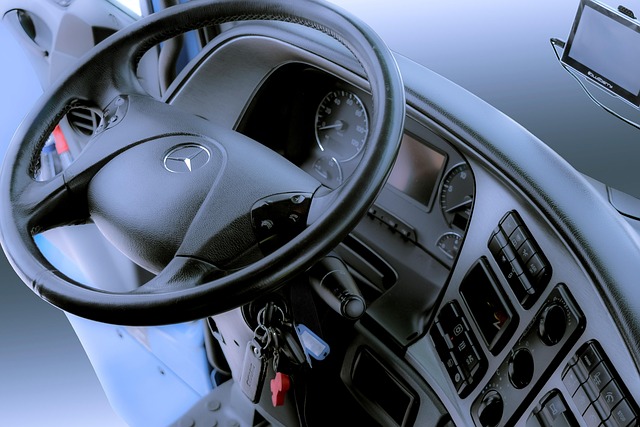Looking to register your car in California? Navigating the process can seem daunting, but understanding the steps and gathering the right documents makes it seamless. This guide dives into the California car registration process, highlighting the crucial roles of both the DMV and VIN Verifier. We’ll walk you through each step, from collecting necessary documents to ensuring a successful registration, making the experience stress-free in the Golden State.
- Understanding the California Car Registration Process
- Gathering Necessary Documents for Registration
- The Role of the DMV and VIN Verifier in Car Registration
- Step-by-Step Guide to Registering Your Vehicle in California
- Important Tips and Considerations for Successful Registration
Understanding the California Car Registration Process

Understanding the California Car Registration Process
Registering a car in California involves several key steps that ensure your vehicle complies with state regulations. The process begins with gathering essential documents, including proof of ownership and identification. Once you have these, you’ll need to visit a local Department of Motor Vehicles (DMV) office or use their online services for a smooth registration experience. A crucial aspect is obtaining a Vehicle Identification Number (VIN) verification from an approved source, such as the DMV’s vin verifier, which confirms your vehicle’s history and authenticity.
After ensuring your car passes all necessary inspections, including a VIN inspection, you can complete the registration form and pay the required fees. This involves providing detailed information about your vehicle, driver, and insurance details. With these steps taken care of, you’ll receive your official California car registration documents, confirming that your vehicle is legally registered and ready to hit the road.
Gathering Necessary Documents for Registration

Before you begin the registration process, it’s crucial to gather all the essential documents required by the California Department of Motor Vehicles (DMV). This includes your vehicle’s registration from the previous state, a valid driver’s license, proof of insurance, and identification documents such as a passport or state-issued ID. Additionally, you’ll need to provide the Vehicle Identification Number (VIN) from your car, which can be easily verified using a mobile VIN verifier or by checking the label on the vehicle’s engine block.
A mobile VIN inspection is a convenient way to ensure that your car’s VIN matches the information in the DMV system. This step is vital as it helps prevent fraud and ensures accurate registration. By utilizing a mobile vin verifier, you can streamline the process and avoid potential delays or complications when submitting your registration application.
The Role of the DMV and VIN Verifier in Car Registration

The Department of Motor Vehicles (DMV) plays a pivotal role in car registration processes in California. It serves as the central authority for issuing vehicle titles, registering drivers, and ensuring road safety. When it comes to confirming a vehicle’s identity, especially crucial for preventing fraud, the DMV relies on a critical process known as Vehicle Identification Number (VIN) verification. This involves cross-referencing the unique VIN with manufacturer records to ensure the car’s history aligns with what’s declared by the owner.
In California, a VIN Verifier is often an authorized third-party service that facilitates this check. They conduct a comprehensive inspection, which may include a mobile VIN verification or on-site vin inspection, to validate the vehicle’s details such as make, model, year, and even its accident history. This dual role of the DMV and VIN Verifier ensures a robust car registration process, safeguarding both consumer interests and public safety on California’s roads.
Step-by-Step Guide to Registering Your Vehicle in California

Registering a car in California involves several steps to ensure your vehicle complies with state regulations. Here’s a step-by-step guide to make the process smoother. First, obtain essential documents like the vehicle’s title and proof of insurance. Then, visit a California Department of Motor Vehicles (DMV) office or use their online services. You’ll need to complete an Application for Title and Registration form and provide your vehicle’s Vehicle Identification Number (VIN) using a DMV-approved VIN verifier.
Next, conduct a vin inspection to verify the vehicle’s condition and history. This can be done at a certified inspection station or through a mobile vin verification service, which offers convenience by coming to your location. After passing the inspection, submit all required documents along with the necessary fees. The DMV will then process your application, issue a registration certificate, and provide you with a license plate.
Important Tips and Considerations for Successful Registration

When registering your car in California, it’s essential to approach the process with a clear understanding of some key tips and considerations. First, ensure all required documents are prepared, including your vehicle’s registration certificate, proof of insurance, and valid driver’s license. The DMV (Department of Motor Vehicles) in California offers both online and in-person registration options, so choose the method that best suits your needs.
Additionally, leverage modern tools like the DMV VIN verifier to streamline the process. A mobile VIN verification service can help you confirm your vehicle’s identity by checking its unique Vehicle Identification Number (VIN), which is crucial for accurate registration. This step ensures that all details about your car, including its history and specifications, are accurately represented, minimizing potential delays or issues. Always verify that all information provided is correct and up-to-date, including the vehicle’s make, model, year, and any modifications made to enhance safety or performance.
Registering a car in California is a straightforward process that requires gathering essential documents, including proof of ownership, insurance, and identification. By following the step-by-step guide outlined in this article, which includes interactions with the DMV and potential use of a VIN verifier, you can ensure a smooth and successful registration experience. Remember to stay organized, double-check your paperwork, and adhere to California’s regulations for a hassle-free process.
